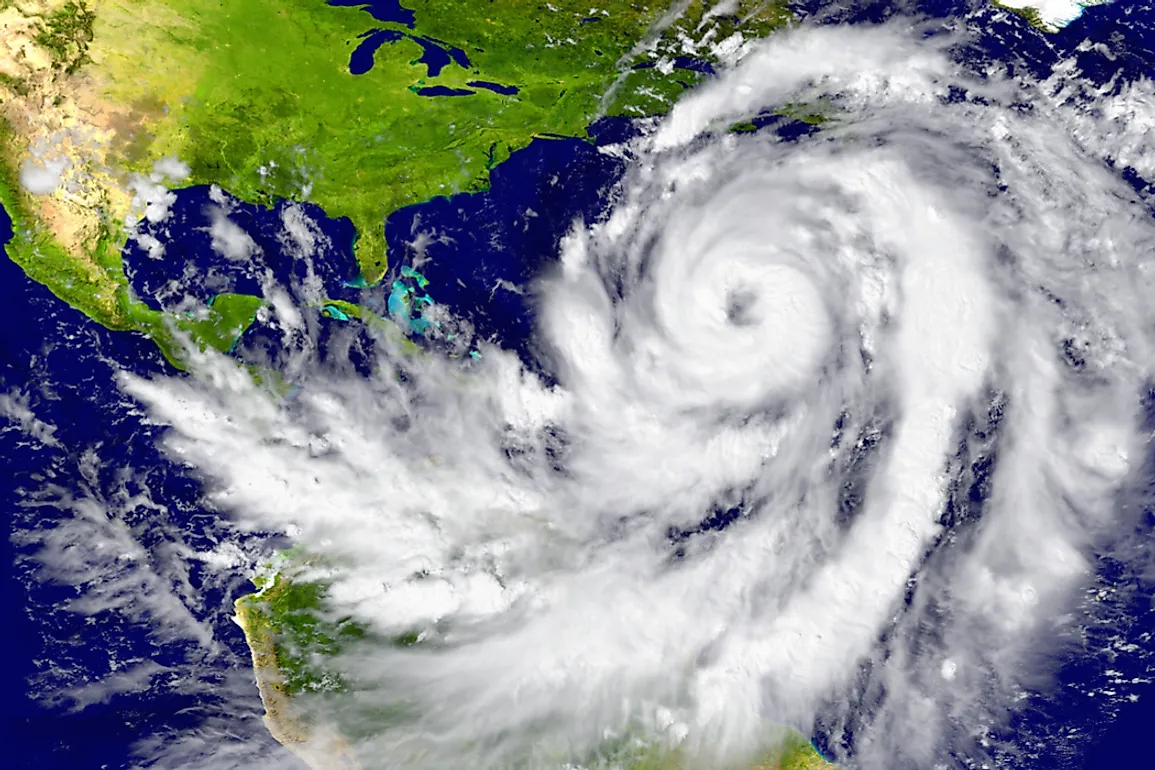Where is Hurricane Alley?

Hurricane Alley refers to a section of warm water within the Atlantic Ocean that spans from Northern Africa’s west coast all the way to Central America’s east coast and the Gulf Coast of the southern region of the US. The region is known as Hurricane Alley due to the fact that plenty of hurricanes originate from the zone. Warm waters (about 26 °C or 78.8 °F) on the surface of the ocean are one of the conditions needed for the formation of a hurricane. Should the temperature be lower than 26 °C, then the strength of the hurricane is diminished. On the other hand, if the temperatures are higher, the speed of the formation and the subsequent strength of the hurricane are both increased greatly.
Formation of Hurricanes
Aside from the optimum temperature, other conditions required for the formation of a hurricane are light winds and tropical waters located in areas that have high humidity levels. Usually, these conditions are available in areas sandwiched by the latitudes 8° and 20° N although the area could also be expanded slightly to encompass the region between 10° and 20° N. In any given season, this region will have the optimum conditions for the formation of a hurricane. Hurricanes cannot form outside this region due to the limitations created by the weakness of the Coriolis Effect outside the zone. In addition to the weakened Coriolis Effect, the temperatures are lower than required. The highest number of hurricanes in the Atlantic happens between the months of July and Mid-October.
At times, the hurricane season leads to the formation of fewer hurricanes than usual, especially if the strength of the beginning hurricanes is stronger than usual. Should this be the case, then the strong hurricanes cause strong convectional currents that bring up colder waters from below the surface. When this happens, any forming hurricane moving over the cold waters will only weaken and die.
Hurricane Alley and Climate Change
In recent times, the temperatures of the sea surface in Hurricane Alley have gone up, especially in the summer of 2005. Scientists have been attempting to ascertain whether the increase in surface temperatures could lead to the formation of more hurricanes in the future. However, the relationship between the two is still unclear to experts in the field. The evidence shows that the increase in tropical sea surface temperatures is contributing to an increase in the intensity of hurricanes. However, in relation to the Hurricane Alley, the data is so far inconclusive. As such, more data is being researched in order to determine if there is a relationship.
Hurricanes and Tornadoes
A hurricane should not be confused with a tornado because the two are quite different. A tornado is an aggressively rotating air column spreading from the base of a cloud (such as the cumulonimbus cloud) to the ground and often (although not always) has a shape resembling a funnel. On the other hand, a hurricane refers to a violently whirling storm capable of having winds with speeds ranging from 74 mph to 157 mph. Another significant distinction is that hurricanes form over water while tornadoes form over land.











